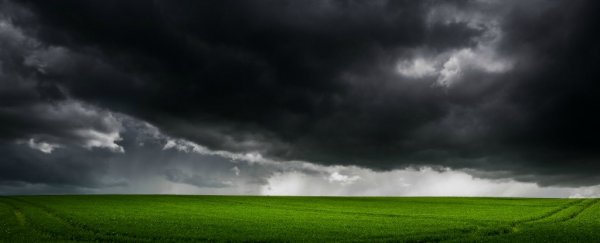People have been performing rain dances and praying for good weather for thousands of years, but it wasn't until the 1930s that a more scientific approach to weather manipulation was attempted. And even now, despite the UN banning weather modification technology in warfare, the science remains pretty sketchy.
Austrian psychoanalyst Willhelm Reich was one of the first to attempt serious weather control by developing a device called a cloudbuster in 1951. The lighting rod-like structure was designed to absorb 'orgone' - a pseudoscience term for a type of life-force - and hypothetically cause the formation of clouds and rain. Unfortunately for him, it didn't work.
More recently, during the 2008 Summer Olympics in Beijing, the Chinese government took some pretty drastic measures to make sure that there was no rain on their parade - literally. For the August 8 opening ceremonies, it was reported that 1,100 rockets were fired into the sky, armed with special chemicals to halt the downpour of rain in the city of Beijing.
There was a 50 percent chance of rain that day, and while none occurred in Beijing, 100 ml (4 in) of rain was recorded in the nearby city of Baoding. So did the rockets work? Impossible to tell, and so far no one's come forth with a convincing explanation as to why the rain was rocket-induced rather than natural.
Seeding clouds to produce rain, on the other hand, has been a much more promising investment, and in recent years has moved from a fringe science into the mainstream.
The chemicals used in cloud seeding involve both silver iodide and frozen carbon dioxide, and they're usually sprayed over the top of clouds to increase precipitation. The technique has been in use in the US since the 1950s, and Russia, China, India, and Australia have also been experimenting with the technique to try and increase rainfall.
But this doesn't mean it's effective - the United States National Research Council released a report in 2004 stating that there is still no scientific proof that cloud seeding actually works.
Storm prevention and hurricane modification have also been tested throughout the world in an attempt to weaken storms, cyclones or hurricanes.
The 2007 documentary How to Stop a Hurricane investigated some of the craziest ways scientists are trying to stop natural disasters. In it, Robert Dickerson, a senior weapons researcher at the US National Hurricane Centre Headquarters in Miami, says he thinks it could be possible to alter hurricanes by using high intensity laser pulses.
A meteorologist from the same centre, William Gray, believes that burning petroleum on barges in a hurricane's path could slow them down.
So although humans are still trying to control the weather, we still haven't managed to quite yet. While some scientists would argue that we're on the brink, we're realistically still many decades away from being able to play God. Until then, we'll just have to settle for being able to correctly predict the weather - most of the time.
